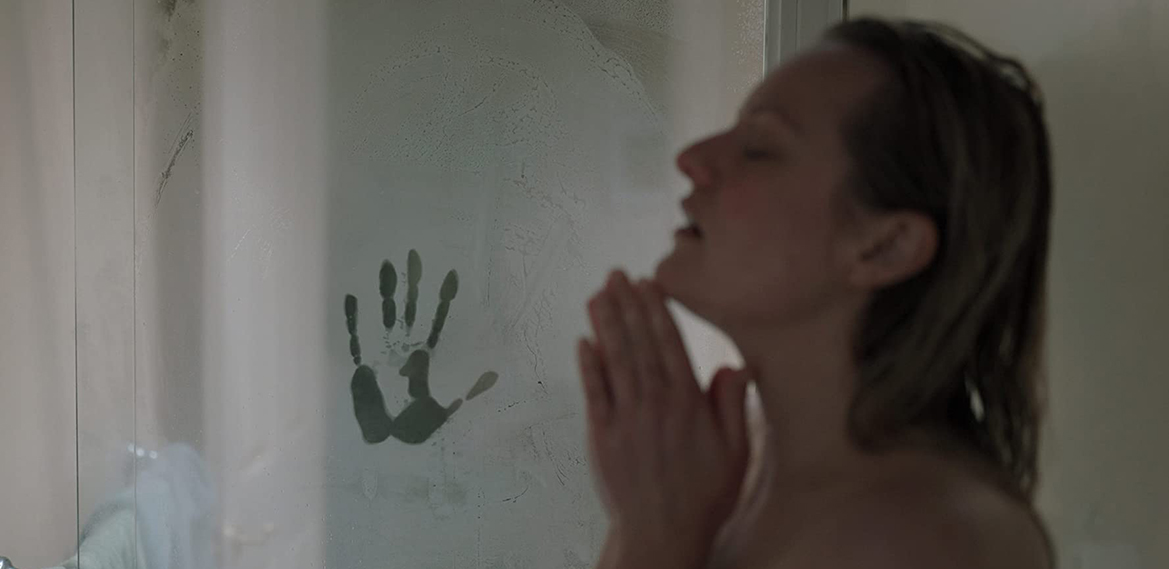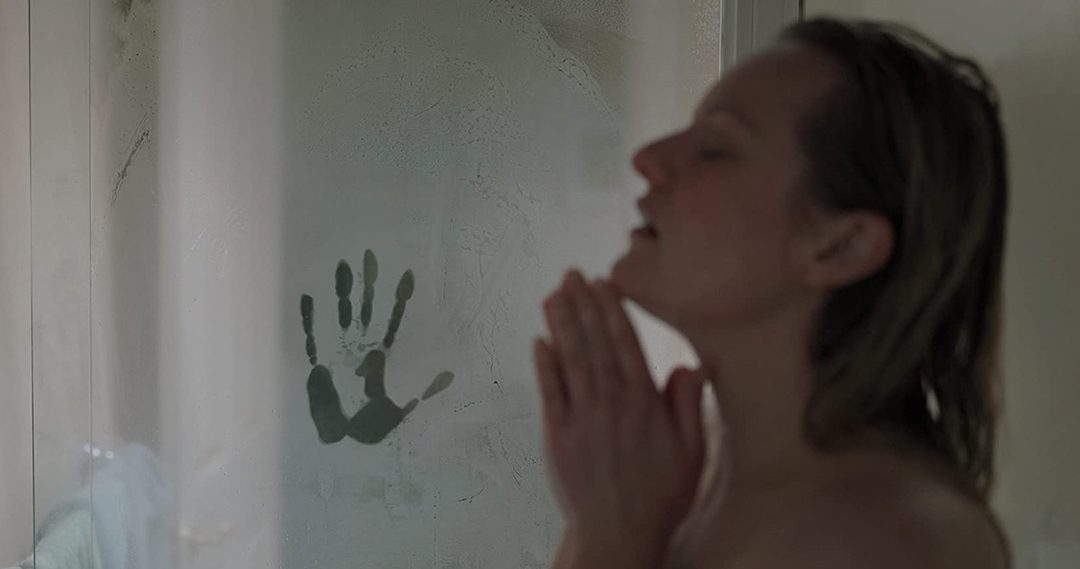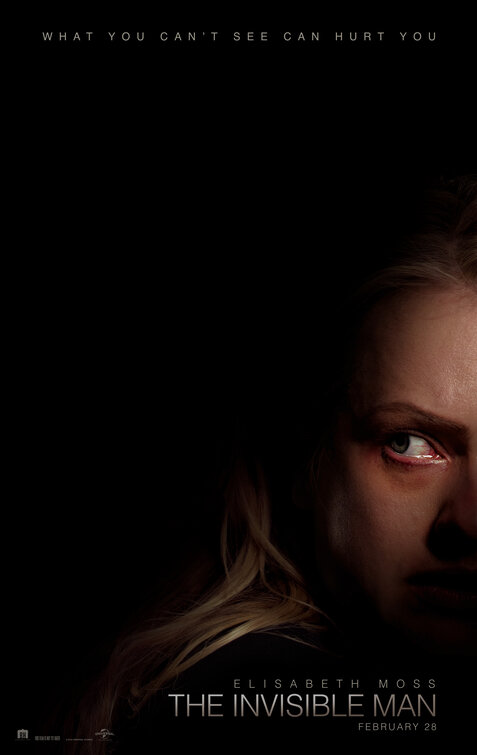“Scorsese Shorts” is also new to Blu-Ray this week.

The Invisible Man
It’s been standard for a while for modestly budgeted motion pictures to use Toronto, Ontario, as a stand in for New York. The city structure, climate, and architecture are close enough to make it believable. As of “The Invisible Man,” we can add another replacement city to the list. Sydney, New South Wales in Australia is a fantastic stand in for San Francisco. It looks and feels right, from the buildings to the cityscape to the thunderous ocean waves crashing against the rocky shoreline in a cool opening credit sequence.
Past the rocks we have the modern, glass-walled house of Cecelia (Elisabeth Moss) and her husband Adrian (Oliver Jackson-Cohen). They’re sleeping in bed together. Cecilia wakes and makes a carefully orchestrated escape from the house and from him with the help of her sister Emily (Harriet Dyer). This is more akin to a prison escape, complete with cameras, alarms, a guard dog (albeit one who is friendly to her), and a climb over a fence. Steve McQueen had an easier time running away from Germans in “The Great Escape.”
We never see or hear Adrian’s abusive behavior that led up to Cecilia leaving, but his reaction that evening is a window into his violent temper. Emily takes Cecila to live with a police detective friend named James (Aldis Hodge), who is raising teenage daughter Sydney (Storm Reid). Cecilia is safe but agoraphobic. It’s only after she finds out that her husband is dead from suicide and his estate lawyer brother Tom (Michael Dorman) lets her know that she has an inheritance that things get strange for Cecilia. She thinks her husband may actually still be alive and stalking her while invisible.
Those familiar with the classic H.G. Wells science fiction story of the same name will no doubt see parallels. Adrian’s last name is Griffin, the same name as the Invisible Man in the Wells novel. The Wells novel was about a scientist who worked in optics and sought to change the human body’s refractive index so that it’s invisible. In “The Invisible Man,” this is done with a form fitting suit covered in cameras, but the principle is the same. To me this shows that this movie is based, however loosely and at least foundationally, on the Wells work. There is even a shot of a hat and a scarf on a mannequin that is clearly an homage to the 1933 film adaptation starring Claude Rains. Curiously, the only writing credits are screen story by and screenplay by Leigh Whannell, who also directed. While this is an original take on the idea of “The Invisible Man” to be sure, it is customary to at least give a nod to the source of inspiration. That is excluded here for some reason. Could Whannell have thought of this story if the Wells novel had never existed? It’s possible, but extremely unlikely.
“The Invisible Man” is more of a directing triumph than a writing one anyway. As the villainous Invisible Man plays mind games with Cecila, the audience too is roped in. Whannell stages some tightly suspenseful scenes in which Cecilia is completely alone in an empty room—or is it empty? Moss does well committing to her role and playing against nothing. As she looks at the room, Whannell gives us a reverse angle look with the camera, seeing it from her point of view. Our imaginations start to stir. He could be anywhere, even directly in front of us, and we wouldn’t know it. Several scenes are constructed this way, each one upping the ante on its predecessor. This is the way good thrillers are made.
Story-wise, however, there are some issues. If thought about too much, there are some logistical problems with what the Invisible Man does and how he does it. There is also one scene where Sydney gets hit and knocked down. She accuses Cecilia since Cecilia was the only other one in the room. However, Cecilia was several feet away from her so she couldn’t have done it. Either this scene should have been better directed to make it plausible that Cecilia was close enough to hit Sydney, or the screenplay should have used this as the moment that Sydney got on board with there being an invisible presence in the house. Either way, it’s on Whannell. He should have re-worked one of the two to make it better.
Then there’s the ending, which I cannot give away. Not that I’d need to since thriller fans and/or anyone familiar with Roger Ebert’s Law of the Economy of Characters will more than likely guess it within the first fifteen minutes as I did—sort of. My theory is that this movie had the ending we all guessed, but test audiences also guessed it. Once the studio got that feedback they had Whannell mix things up a bit. The ending of this movie is a case of audiences who are too savvy and hip to the tropes in these types of stories and studios trying to out-clever the audience who they know is on to its ways.
Like in last week’s “The Way Back,” the results are mixed. The typical ending that we can all guess is fine, if uninspired. The mixed ending undermines the plot of the movie and makes less sense, though it provides a satisfying conclusion and leaves more potential for dastardly deeds to come if Universal decides to re-try its “Dark Universe.” It also, I think accidentally, helps the heroine out with anyone who knows the side effects of diazepam. If the typical ending would have stayed, that would have been an issue that I am sure would have been called out. Rent it.
“Scorsese Shorts,” a collection of short films made by director Martin Scorsese from 1963 to 1978—be sure to watch the end credits of “Italianamerican” for his mother Catherine’s recipe for sauce, and “Ator, the Flying Eagle,” a boring, PG-rated “Conan” rip-off with box art that makes the movie look way, way, better than it actually is.


